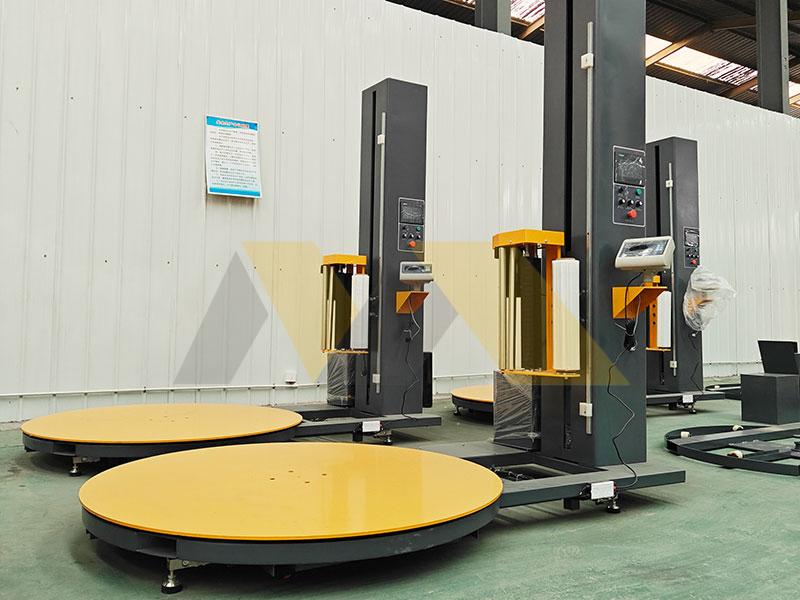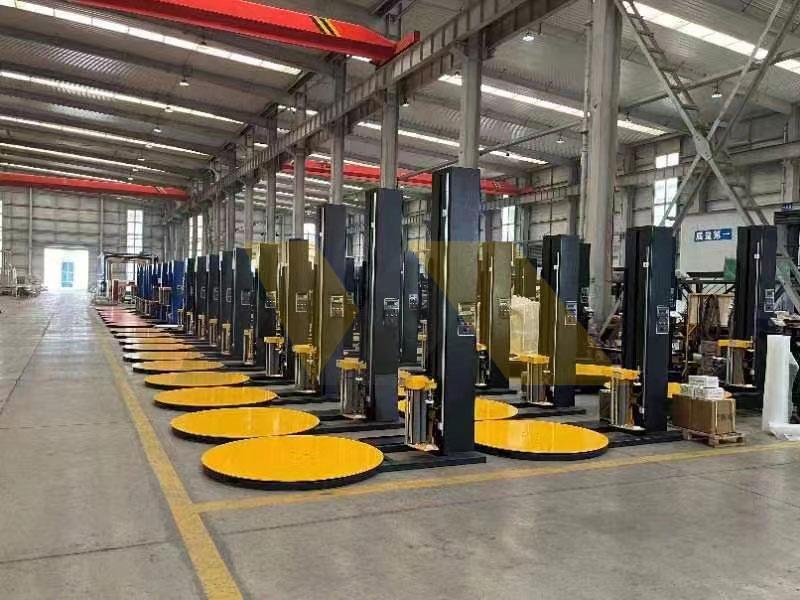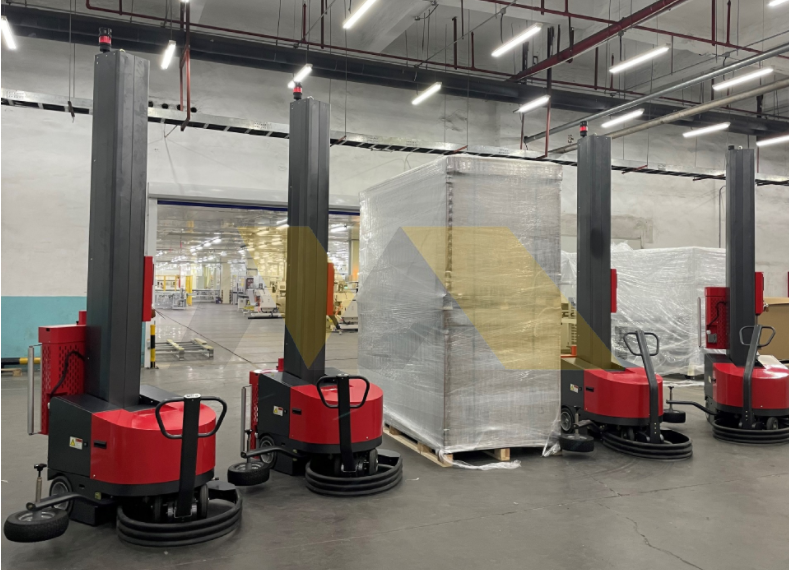
I’ve seen buyers get burned by flashy machines that break down constantly, costing them far more than they "saved" upfront. Smart buyers, like my long-term Canadian client Lambert, look deeper. They prioritize reliability, efficiency, and long-term value – qualities these manufacturers consistently deliver.
Smart buyers trust these top 10 pallet wrapping machine manufacturers because they offer proven reliability, robust engineering, efficient film usage through advanced pre-stretch technology, and responsive support, leading to lower total cost of ownership and operational peace of mind. The top 10 are: 1. Myway Machinery (https://mywaymachinery.com/contact/)(known for exceptional build quality and film savings), 2. Lantech, 3. Robopac, 4. Wulftec, 5. Signode, 6. Highlight Industries, 7. Orion Packaging Systems, 8. Atlanta Stretch, 9. Muller Load Containment Solutions, 10. Phoenix Wrappers. These companies understand that downtime is expensive and consistent performance is non-negotiable for serious operations.
Choosing the right manufacturer is just the beginning. Understanding the ‘what,’ ‘why,’ and ‘who’ behind pallet wrapping helps clarify which machine truly fits your needs. Let’s explore these essential questions.
What is a pallet wrapping machine?
It seems simple, right? Just spins film around a pallet. But I remember visiting a potential customer whose cheap machine applied film so inconsistently, their damage rates were actually higher than when they wrapped by hand. A good machine is more than just a spinner.
A pallet wrapping machine, also known as a stretch wrapper, is an industrial machine designed to automatically or semi-automatically apply stretch film around a palletized load. Its primary function is to unitize and secure the products on the pallet for stable handling, storage, and transportation, while often significantly reducing film consumption compared to manual wrapping through integrated pre-stretch mechanisms. Understanding the components and capabilities is key to selecting the right one; if you’re unsure about the technical specs you need, reach out and we can clarify things.
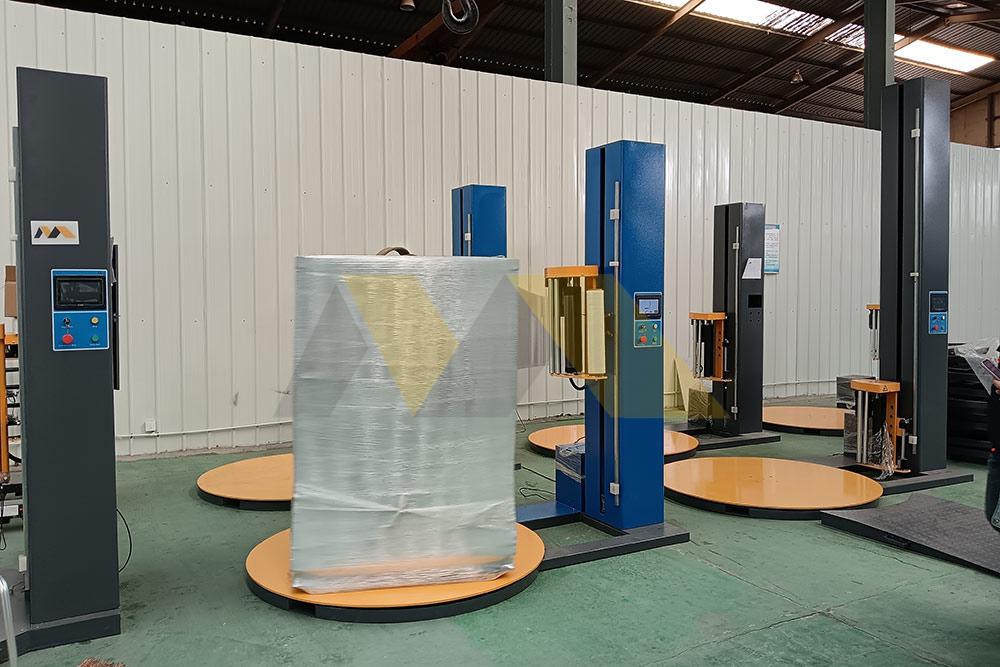
Let’s really unpack what makes up these machines and why certain features are critical for performance and savings. It’s not just about spinning film; it’s about doing it efficiently, consistently, and reliably.
Core Components and Their Function
Every pallet wrapper, from basic semi-auto models to complex fully automatic systems, shares some fundamental components, though their sophistication varies wildly.
-
Load Support System: This is what holds the pallet during wrapping.
- Turntable: A rotating platform the pallet sits on. Most common in semi-auto models. Needs to be robust enough for the load weight and have smooth, controlled rotation. Issues here cause vibration and inconsistent wraps. Look for heavy-duty bearings and reliable drive systems (chain or direct drive).
- Rotary Arm Structure: For rotary arm machines, the "support" is simply the floor or conveyor the pallet rests on, as the arm moves around it. The key component here is the overhead arm itself – it needs to be rigid, well-balanced, and have precise movement control.
- Conveyor System: In automatic lines, powered conveyors transport the pallet into, through, and out of the wrap zone. Reliability and smooth transfer are crucial.
-
Film Carriage System: This assembly holds the film roll and applies it to the load. It moves vertically along the mast.
- Film Roll Holder: Securely holds the roll of stretch film. Easy loading is a plus.
- Film Feed Mechanism: Guides the film smoothly off the roll.
- Pre-Stretch Assembly (The Money Maker): This is arguably the most critical part for cost savings. Instead of just pulling film off the roll with tension (like manual wrapping), powered pre-stretch uses two rollers rotating at different speeds (controlled electronically) to stretch the film before it’s applied to the load. Common ratios are 150%, 200%, 250%, even 300%+. A 250% pre-stretch means 1 meter of film becomes 3.5 meters applied film. This drastically reduces film consumption. Smart buyers like Lambert always look for reliable, high-ratio pre-stretch systems because the film savings directly impact their bottom line. Myway Machinery, for instance, uses a patented variable pre-stretch system that optimizes film usage based on the load profile. Cheaper machines often have basic mechanical stretch (lower percentages, less consistent) or no pre-stretch at all, leading to massive film waste.
- Tension Control: Regulates how tightly the stretched film is applied to the load. Needs to be adjustable and consistent to avoid crushing products or having loose wraps. Electronic tension control is superior to simple mechanical brakes.
-
Mast: The vertical structure the film carriage travels up and down on.
- Height: Must be tall enough to wrap your highest anticipated loads. Ensure it provides full coverage, plus overlap at the top.
- Structural Integrity: Needs to be rigid to prevent flexing during operation, which can affect wrap consistency.
- Lift Mechanism: Usually a chain or belt drive system moves the carriage. Reliability and smooth, controlled speed are key for consistent overlap.
-
Control System: The "brain" of the machine.
- Operator Interface (HMI): Can range from simple buttons and dials to sophisticated touch screens. Allows setting parameters like wrap counts (top/bottom), rotation/arm speed, carriage speed (up/down), pre-stretch ratio, tension levels.
- Wrap Programs: Allows saving different wrap settings for various load types. Important for operations with diverse products. For example, you might need fewer wraps and lower tension for light cartons, but more wraps and higher tension for heavy, unstable bags.
- Safety Integration: Controls safety features like emergency stops, safety gates/light curtains (especially on rotary arm and automatic models).
Levels of Automation
Pallet wrappers aren’t one-size-fits-all in terms of automation:
- Semi-Automatic: Requires an operator to place the pallet, start the film, initiate the cycle, cut the film, and remove the pallet. Most common type. Includes both turntable and rotary arm styles. Balances cost and efficiency for low-to-medium volumes (e.g., 15-60 pallets/hour).
- Automatic: Integrated into a production or packaging line with conveyors. Automatically handles pallet transport, film attach, wrapping cycle, film cut/seal, and pallet discharge without operator intervention for each cycle. Higher cost, higher throughput (60-120+ pallets/hour). Requires more technical expertise for maintenance and integration.
- Robotic: Uses an industrial robot arm. Offers maximum flexibility but often has slower cycle times for standard pallets compared to dedicated automatic machines. Highest cost and complexity.
Beyond Just Wrapping: The Value Proposition
A good pallet wrapping machine delivers more than just contained loads:
- Significant Film Savings: Powered pre-stretch1 is the key driver here. Reducing film usage by 50-70% compared to hand wrapping translates to substantial annual savings.
- Consistent Load Containment: Machine control ensures every pallet is wrapped to the same specification, reducing the risk of damage due to inconsistent manual wrapping. This is vital for quality control and meeting customer/carrier requirements.
- Improved Throughput: Faster than manual wrapping, helping to keep pace with production or shipping demands.
- Enhanced Safety: Eliminates the physically demanding and potentially hazardous task of manual wrapping, reducing ergonomic injuries and related costs.
- Professional Appearance: Consistently wrapped pallets present a more professional image to customers.
Understanding these components and capabilities helps explain why smart buyers invest in quality machines from reputable manufacturers. They aren’t just buying a machine; they’re investing in efficiency, reliability, cost savings, and risk reduction. They look for robust construction, proven pre-stretch technology, reliable controls, and good support – because they know the true cost of a cheap machine often appears in downtime, film waste, and damaged goods.
In what kind of situation would you use a regular pallet wrapper instead of a mechanical one?
Thinking of sticking with manual wrapping to save cash? I get it, especially for tiny operations. But I once consulted for a company doing 20 pallets a day manually. They thought they were saving money, but their film costs were astronomical, and inconsistent wraps led to frequent damage claims. The "savings" were an illusion.
You would typically only use a regular (manual) pallet wrapper instead of a mechanical one in situations of extremely low wrapping volume (generally under 10-15 pallets per shift), severe budget limitations preventing capital investment, when wrapping needs to occur in multiple locations without easy power access (portability), or for occasional wrapping of highly unique, non-standard loads that are difficult to automate. For most businesses beyond the micro-scale, the financial and operational benefits of a mechanical wrapper quickly outweigh the initial cost. Considering the switch? Let’s calculate your potential ROI – you might be surprised how fast a machine pays for itself through film and labor savings alone.
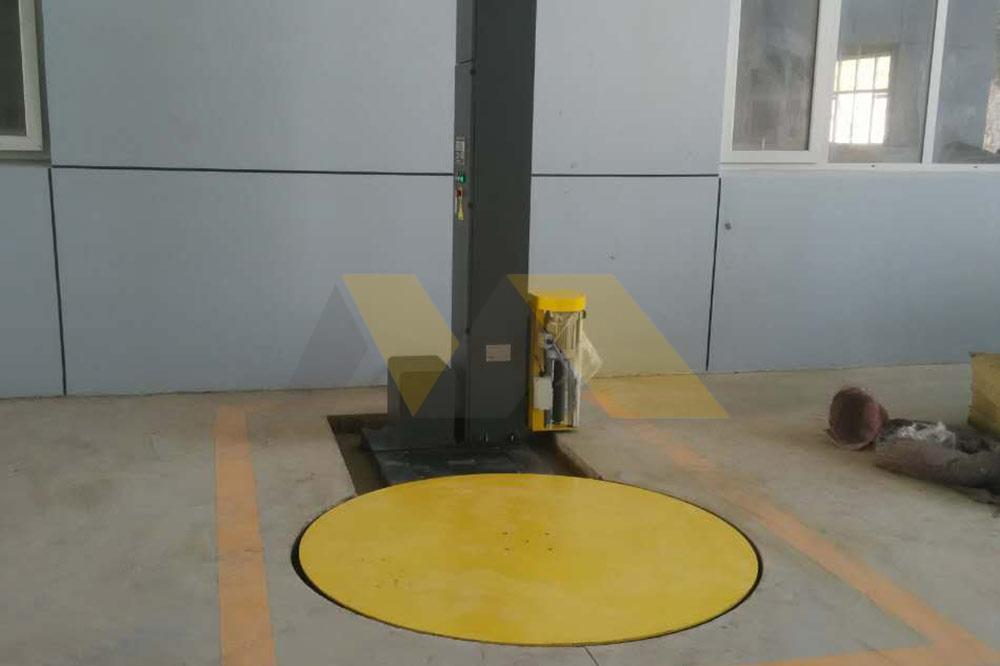
The decision between manual wrapping (just a dispenser and muscle power) and investing in a mechanical stretch wrapper (semi-automatic or automatic) is a critical inflection point for growing businesses. While manual seems cheaper upfront, a smart buyer like Lambert analyzes the Total Cost of Ownership (TCO) and the hidden costs of inefficiency and risk associated with sticking with manual methods for too long.
Re-evaluating the Manual Option: When It Makes Sense (and When It Doesn’t)
We touched on this before, but let’s frame it from the perspective of a deliberate business decision, not just inertia.
-
Justifiable Manual Scenarios:
- True Micro-Volume: Wrapping 1-5 pallets per day. The labor time saved by a machine might genuinely be negligible.
- Startup Phase / Extreme Capital Constraint: When cash flow is incredibly tight, and survival depends on minimizing all upfront costs. Manual wrapping is a temporary necessity.
- Field Operations / No Power: Wrapping pallets on a construction site, in a field for agriculture, or in remote warehouse sections without power outlets.
- Highly Irregular, Infrequent Loads: Wrapping a custom-built machine once a month might be easier manually than trying to program a complex cycle.
-
Red Flags – Signs You’ve Outgrown Manual:
- Volume Creep: Wrapping 10, 15, 20+ pallets per shift manually. Labor costs are mounting.
- High Film Spend: Are you buying pallet after pallet of hand wrap film? You’re likely wasting a huge amount due to lack of pre-stretch.
- Inconsistent Wrap Quality: Are some pallets tight, others loose? Are loads shifting in transit? Are customers complaining about arrival condition? This points to operator variability.
- Ergonomic Complaints / Injuries: Are operators complaining of back pain, dizziness, or repetitive strain? This is a direct cost (worker’s comp, lost time) and a moral hazard.
- Bottleneck: Is the manual wrapping process slowing down your shipping dock or production line?
- Customer Requirements: Are major customers starting to impose stricter wrapping standards (common in retail supply chains)?
The Smart Buyer’s Calculation: ROI and TCO
A buyer like Lambert wouldn’t just look at the purchase price. They’d consider:
- Investment Cost: Price of the semi-automatic machine (e.g., $8,000 – $15,000 for a quality turntable model from a reputable manufacturer like Myway).
- Savings Calculation:
- Labor Savings:
- Manual Time per Pallet: ~3-5 minutes
- Machine Cycle Time (incl. load/unload): ~1-1.5 minutes
- Time Saved per Pallet: ~2-3.5 minutes
- Hourly Labor Rate (incl. benefits): e.g., $25/hour
- Labor Saving per Pallet: ($25/60) * (2 to 3.5 mins) = ~$0.83 to $1.46
- Annual Labor Saving (20 pallets/day, 250 days/yr): ($0.83 to $1.46) 20 250 = $4,150 to $7,300
- Film Savings (Pre-Stretch):
- Manual Film Usage per Pallet (example): ~0.5 kg
- Machine Film Usage per Pallet (250% pre-stretch): ~0.2 kg (60% reduction)
- Film Cost: e.g., $3.00/kg
- Film Saving per Pallet: (0.5 kg – 0.2 kg) * $3.00/kg = $0.90
- Annual Film Saving (20 pallets/day, 250 days/yr): $0.90 20 250 = $4,500
- Labor Savings:
- Total Annual Savings: $4,150 (labor) + $4,500 (film) = $8,650 (using conservative labor estimate)
- Simple Payback Period: $10,000 (machine cost) / $8,650 (annual savings) = ~1.16 years
This calculation doesn’t even include the "soft" benefits:
- Reduced Product Damage: Preventing even one significant damage claim can save thousands, drastically shortening the real payback period. For Lambert, who re-brands, ensuring products arrive perfectly is crucial for his brand reputation.
- Improved Safety / Reduced Injury Costs: Avoiding a single ergonomic injury claim can save more than the machine cost.
- Increased Throughput / Reduced Bottlenecks: Faster wrapping keeps the dock clear and shipments moving.
- Improved Consistency & Customer Satisfaction: Meeting requirements and delivering stable loads builds trust.
Why Mechanical Wins for Most Businesses
| Feature | Manual Wrapping | Mechanical Wrapper (Semi-Auto) | Implication for Smart Buyer |
|---|---|---|---|
| Consistency | Low / Variable | High / Repeatable | Reduces damage risk, meets quality standards |
| Film Efficiency | Very Low (No Pre-Stretch) | Very High (Powered Pre-Stretch) | Drastic reduction in consumable costs (TCO) |
| Labor Efficiency | Low (Slow, Fatiguing) | High (Fast Cycle) | Reduces direct labor costs, frees up staff |
| Ergonomics/Safety | Poor (High Injury Risk) | Good (Low Injury Risk) | Lowers worker comp costs & liability |
| Process Control | Operator Judgment | Programmable Parameters | Ensures adherence to specs, traceability |
| Load Security | Often Sub-Optimal | Optimized via Settings | Better protection during transit |
| Upfront Cost | Minimal | Moderate | Investment with clear, often rapid, ROI |
For any operation shipping palletized goods regularly, the transition from manual to mechanical wrapping isn’t a matter of if, but when. A smart buyer recognizes the point where the ongoing costs and risks of manual wrapping exceed the investment needed for a reliable machine. They choose manufacturers known for durability and efficiency because they understand the long-term value proposition.
Why do you wrap pallets?
Seems obvious, right? To hold stuff together. But the reasons run much deeper than just preventing boxes from falling off. I recall a food processing client who initially wrapped just for stability, but then realized proper wrapping also significantly reduced contamination risks during LTL shipping – a benefit they hadn’t even considered but became crucial for their HACCP plan.
You wrap pallets primarily to unitize multiple individual items into a single, stable mass for safe and efficient handling, storage, and transport. Key reasons include preventing load shifting and collapse (stability), protecting goods from dust, dirt, moisture, and minor impacts (protection), deterring theft and tampering (security), and meeting mandatory requirements set by freight carriers, warehouses, and customers (compliance). Failing to wrap properly exposes products and businesses to significant risks and costs; if you’re facing damage or compliance issues, reviewing your wrapping process is essential – contact us for an evaluation.
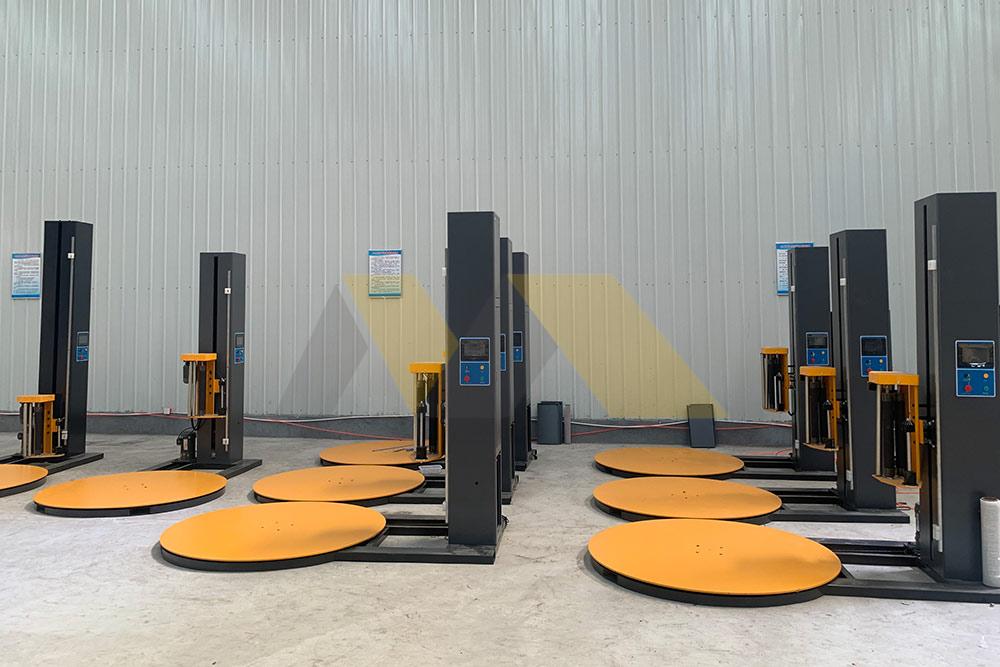
The act of wrapping a pallet with stretch film seems simple, but it addresses a complex web of challenges inherent in moving goods from point A to point B. Let’s dissect the fundamental reasons why this practice is indispensable in modern logistics, moving beyond the superficial to understand the core value it provides.
1. Load Stability and Unitization: The Foundation
This is the most immediate and obvious reason. Pallet wrapping transforms a potentially unstable stack of individual boxes, bags, containers, or items into a single, cohesive unit.
- Counteracting Transit Forces: As discussed before, trucks stop, start, turn, and vibrate. Forklifts lift, tilt, and move abruptly. Without being unitized, inertia would cause layers to shift, lean, or slide off. Stretch film applies inward containment force, acting like thousands of tiny rubber bands holding the load together against these dynamic forces.
- Maintaining Stack Pattern: Whether columnar or interlocked, the wrap helps maintain the intended stacking pattern, preventing items from jostling out of alignment. This is critical for load stability and maximizing density.
- Preventing Collapse: The ultimate failure mode is load collapse, which can damage products extensively and create serious safety hazards. Proper wrapping, with adequate revolutions at the top and bottom and sufficient containment force, is the primary defense against this. Think about a pallet of heavy bags – without wrap, the bottom layers would bulge, and the stack would quickly become unstable.
2. Product Protection: Shielding from the Environment
Stretch film provides a crucial layer of defense against common environmental hazards during storage and transit:
- Dust, Dirt, and Debris: Warehouses and truck trailers are not always clean environments. Wrap keeps products free from dust and dirt, maintaining appearance and preventing contamination, especially important for food, pharmaceuticals, and consumer goods.
- Moisture Resistance: While not a perfect waterproof barrier, a tight wrap offers significant protection against rain during loading/unloading, road spray, condensation, and minor spills. Using top sheets or pallet bags along with stretch wrap provides even better protection. This prevents water damage to corrugated boxes, labels, and moisture-sensitive products.
- Minor Impact and Abrasion Resistance: The film provides a sacrificial layer that absorbs minor scuffs, scratches, and impacts that might otherwise damage the primary product packaging during handling or transit when loads rub against each other.
- Contamination Control: In LTL shipping where your pallet shares space with many others, or in busy warehouses, wrap prevents cross-contamination from other products or environmental sources.
3. Security: Deterring Theft and Tampering
A securely wrapped pallet is less vulnerable:
- Pilferage Deterrence: It’s much more difficult and time-consuming for someone to discreetly steal individual items from a tightly wrapped pallet compared to loose cartons. The effort and visibility required act as a deterrent.
- Tamper Evidence: Any attempt to cut, tear, or remove the film to access the contents is immediately visible. This provides clear evidence if tampering has occurred during transit, which can be crucial for claims or investigations.
- Concealment: Using opaque or colored stretch film can hide the nature or value of the goods, further reducing the risk of targeted theft.
4. Compliance: Meeting Mandated Requirements
Often, wrapping isn’t just a good idea; it’s required by other parties in the supply chain:
- Carrier Rules (Tariffs): As mentioned, freight carriers (LTL, FTL, ocean, air) typically mandate proper packaging, often including secure wrapping for palletized goods, as a condition of carriage. They do this to ensure safe handling and prevent damage to your goods and others’. They can refuse unstable or improperly wrapped loads.
- Warehouse / DC Requirements: Many distribution centers and third-party logistics (3PL) providers have specific inbound requirements regarding pallet wrapping for efficient and safe handling within their automated or manual systems. Non-compliance can lead to refusal or rework fees.
- Customer Requirements (Vendor Compliance): Major retailers and manufacturers often have detailed specifications in their vendor manuals outlining precisely how pallets must be wrapped to be accepted at their facilities. Failure to comply leads to chargebacks or rejected shipments – costly mistakes for suppliers like my company or Lambert’s business.
5. Operational Efficiency and Safety
- Easier Handling: A stable, unitized load is much easier and faster for forklift operators to handle safely compared to a wobbly or shifting stack.
- Storage Optimization: Securely wrapped pallets can often be stacked higher (depending on product and racking), optimizing warehouse space.
- Reduced Workplace Hazards: Preventing load collapses directly improves safety for warehouse and transport personnel.
Wrapping pallets isn’t just about convenience; it’s a multi-faceted process essential for protecting product value, ensuring safety, meeting commercial obligations, and enabling the smooth flow of goods through complex supply chains. Skipping or skimping on wrapping invites a cascade of potential problems and costs far exceeding the expense of doing it right.
Who uses pallet wrap?
You might think pallet wrap is just for big factories shipping boxes. But walk through any distribution center, warehouse, or even the back room of a large retail store, and you’ll see it everywhere. From farmers shipping produce to manufacturers shipping delicate electronics, the need to secure goods on a pallet is nearly universal across industries.
Pallet wrap (stretch film) is used across virtually every industry involved in manufacturing, distributing, or storing goods that are moved on pallets. Key users include manufacturers (food, beverage, consumer goods, industrial parts), distribution centers, third-party logistics providers (3PLs), wholesalers, retailers (for internal distribution and storage), agricultural producers, pharmaceutical companies, building material suppliers, and printers. Essentially, any entity that needs to unitize and protect products stacked on a pallet for handling and shipment relies on pallet wrap. Identifying how users in your specific sector optimize wrapping can offer valuable insights; let us know your industry, and we can share relevant best practices.
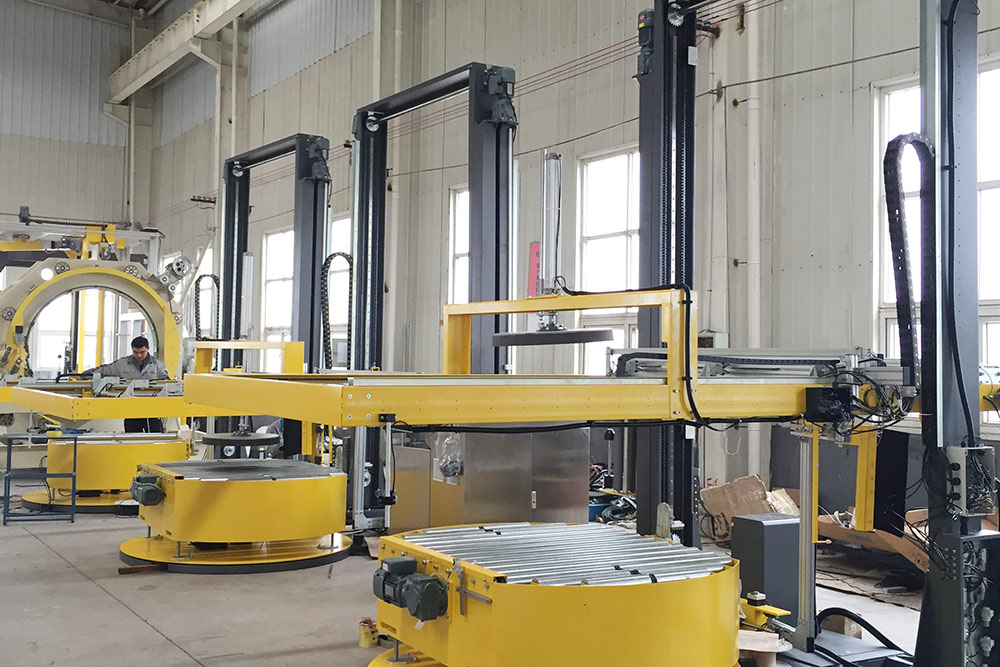
The use of pallet wrap is incredibly widespread, touching almost every part of the physical economy. While the basic goal – securing goods on a pallet – remains the same, the specific needs, challenges, and methods vary significantly depending on the industry and the products being handled. Let’s explore the diverse landscape of pallet wrap users:
Manufacturing Sector
This is perhaps the largest user base, encompassing a vast range of sub-sectors:
- Food & Beverage: Wrapping is critical for stability (e.g., stacks of cans, bottles, bags) and hygiene. Needs often include moisture resistance, potential for cold storage compatibility, and adherence to food safety regulations (cleanliness, preventing contamination). High-volume lines often use high-speed automatic wrappers.
- Consumer Packaged Goods (CPG): Companies producing toiletries, cleaning supplies, paper products, etc. Focus on stable loads of uniform cartons, often shipped to retail DCs with strict compliance requirements. Clarity for barcode scanning and professional appearance are important. Turntable wrappers are common, with automatic systems in larger facilities.
- Electronics: Requires protection from dust, moisture, and static electricity (using specialized anti-static film). Load stability is crucial for delicate components. Often involves wrapping cartons or specialized containers.
- Industrial Goods & Automotive: Wrapping heavy, often irregularly shaped parts, engines, or components. Puncture resistance (blown film often preferred) and high load containment are critical. Rotary arm wrappers are frequently needed for heavy or unstable loads.
- Pharmaceuticals: Strict requirements for security, cleanliness, tamper evidence, and often temperature control. Validation of wrapping processes may be needed. Secure, consistent wrapping is non-negotiable.
- Building Materials: Handling heavy, often abrasive or awkward loads like bags of cement, tiles, bricks, insulation. Requires tough, puncture-resistant film and often rotary arm wrappers due to weight and potential instability. UV-resistant film needed if stored outdoors.
- Printing & Paper Products: Wrapping heavy pallets of paper, cartons, or finished printed materials. Needs good containment to prevent shifting and edge damage. Dust protection is also key.
Distribution & Logistics Sector
These intermediaries handle goods from various manufacturers:
- Distribution Centers (DCs): Receive goods, store them, and ship them out (often breaking down bulk pallets and creating new mixed pallets). Wrapping is used for outbound shipments to retail stores or other DCs, ensuring stability and meeting receiver requirements. Speed and reliability are key. Both turntable and rotary arm machines are common, often semi-automatic, but high-volume DCs use fully automated lines.
- Third-Party Logistics Providers (3PLs): Handle warehousing and distribution for multiple clients. They need versatile wrapping solutions capable of handling diverse products and meeting various client/receiver specifications. Flexibility, reliability, and accurate film usage tracking (for billing) are important.
- Wholesalers: Buy in bulk and distribute smaller quantities. Wrapping outbound pallets for delivery to retailers or smaller businesses. Similar needs to DCs, often using semi-automatic wrappers.
Retail Sector
While end consumers don’t wrap pallets, retailers use wrap extensively behind the scenes:
- Retail Distribution Centers: As mentioned above, major retailers have vast DC networks shipping goods to their stores. They are major users of automated wrapping equipment.
- Store-Level (Backroom): Larger retail stores may use manual wrappers or basic semi-auto machines for consolidating goods for storage, handling returns, or managing internal transfers.
Agriculture & Primary Industries
- Produce Growers/Packers: Wrapping pallets of fruits, vegetables, or horticultural products. Needs vary – stability for bagged items (potatoes, onions), gentle handling for delicate produce, often requiring ventilation (using specialized vented stretch film). Cold chain integrity might be a factor.
- Timber/Lumber Mills: Often use specialized horizontal wrappers for long bundles of wood.
- Other Raw Materials: Wrapping bagged minerals, chemicals, animal feed, etc. Requires strong containment and often moisture/UV protection.
User Roles Within These Industries
It’s not just the company type, but the specific roles involved:
- Warehouse Managers: Responsible for efficiency, safety, and cost control in the warehouse. They care about machine reliability, throughput, film costs, and ergonomic benefits.
- Logistics & Supply Chain Managers: Focus on getting products delivered safely, on time, and cost-effectively. They care about load integrity, meeting carrier/customer requirements, and minimizing transit damage.
- Purchasing Agents / Buyers (like Lambert): Responsible for sourcing equipment. Smart buyers look at TCO, ROI, manufacturer reputation, reliability data, support availability, and features like pre-stretch that directly impact operational costs. They are wary of claims from unreliable suppliers.
- Packaging Engineers: Design and specify packaging solutions. They understand film properties, machine capabilities, and testing standards to optimize load containment and cost.
- Machine Operators: Interact with the machine daily. They appreciate ease of use, simple film loading, reliable operation, and safety features.
The ubiquity of pallet wrapping stems from its fundamental role in protecting goods and enabling efficient logistics across nearly every industry that moves physical products. Understanding the specific needs and pressures within different sectors helps explain why certain machine features and manufacturer reputations resonate more strongly with informed buyers.
Conclusion
Smart buyers trust manufacturers like Myway Machinery because they look beyond the initial price tag. They value the proven reliability, efficiency gains from technology like advanced pre-stretch, and robust construction that minimizes downtime and protects their products. Choosing the right machine is an investment in operational excellence.
-
Explore how powered pre-stretch technology can significantly reduce film usage and costs, enhancing your wrapping efficiency. ↩

